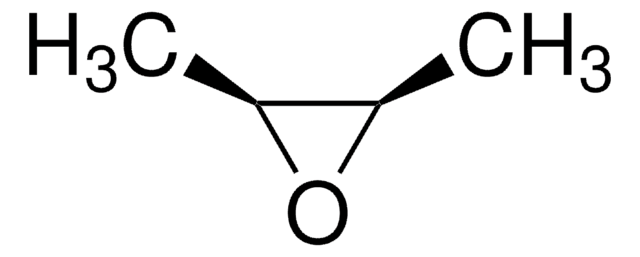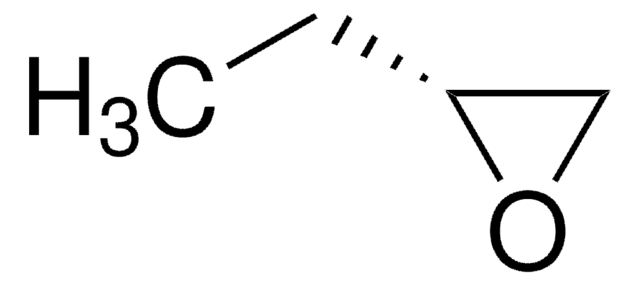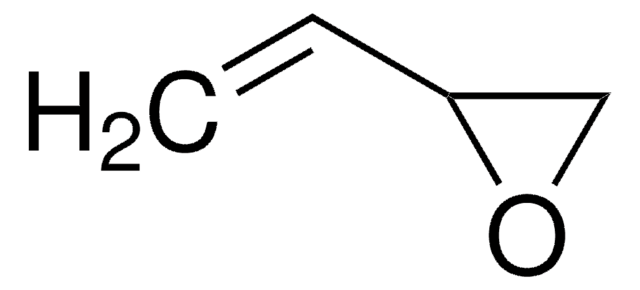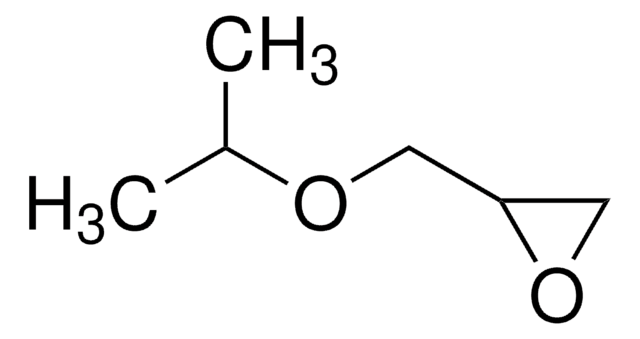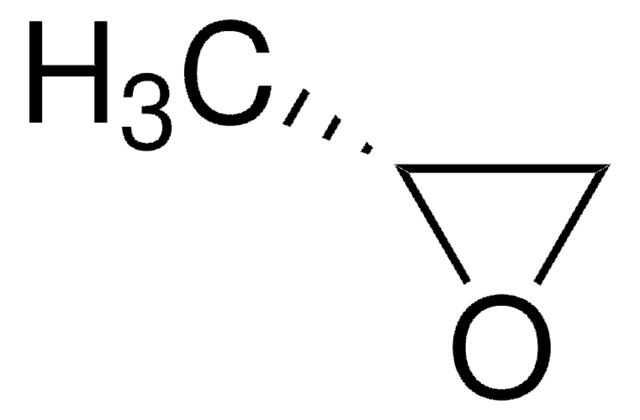109975
1,2-Epoxybutane
99%
Synonyme(s) :
α-Butylene oxide, 1,2-Butylene oxide, 1-Butene oxide, Ethyloxirane
About This Item
Produits recommandés
Densité de vapeur
2.2 (vs air)
Niveau de qualité
Pression de vapeur
140 mmHg ( 20 °C)
Essai
99%
Température d'inflammation spontanée
698 °F
Limite d'explosivité
19 %
Indice de réfraction
n20/D 1.384 (lit.)
pb
63 °C (lit.)
Densité
0.829 g/mL at 25 °C (lit.)
Chaîne SMILES
CCC1CO1
InChI
1S/C4H8O/c1-2-4-3-5-4/h4H,2-3H2,1H3
Clé InChI
RBACIKXCRWGCBB-UHFFFAOYSA-N
Vous recherchez des produits similaires ? Visite Guide de comparaison des produits
Catégories apparentées
Application
- As a monomer to synthesize novel initiators via ring-opening polymerization. These initiators can be used to prepare complex macromolecules such as grafted polyamides.
- To functionalize polyethyleneimine which is used in the synthesis of oxidation-stable adsorbents for CO2 capture.
Caractéristiques et avantages
- High polymerizability
- Low susceptibility to transfer reaction
- Ease of handling
Mention d'avertissement
Danger
Mentions de danger
Classification des risques
Acute Tox. 4 Dermal - Acute Tox. 4 Inhalation - Acute Tox. 4 Oral - Carc. 2 - Eye Irrit. 2 - Flam. Liq. 2 - Skin Irrit. 2 - STOT SE 3
Organes cibles
Respiratory system
Code de la classe de stockage
3 - Flammable liquids
Classe de danger pour l'eau (WGK)
WGK 1
Point d'éclair (°F)
5.0 °F - closed cup
Point d'éclair (°C)
-15 °C - closed cup
Équipement de protection individuelle
Eyeshields, Faceshields, Gloves
Faites votre choix parmi les versions les plus récentes :
Déjà en possession de ce produit ?
Retrouvez la documentation relative aux produits que vous avez récemment achetés dans la Bibliothèque de documents.
Les clients ont également consulté
Notre équipe de scientifiques dispose d'une expérience dans tous les secteurs de la recherche, notamment en sciences de la vie, science des matériaux, synthèse chimique, chromatographie, analyse et dans de nombreux autres domaines..
Contacter notre Service technique


